One of the first concepts I learned about in portrait photography was “Lens Compression.” The common assumption is that a telephoto lens will “compress” the foreground and background together. This produces a more pleasing portrait that doesn’t distort facial features while still drawing attention to your subject (and not the background). In this post, I’ll get into more detail as to what lens compression truly is (and isn’t) and discuss how it applies to other genres of photography, like landscapes.
Let me first clarify that lens compression doesn’t technically exist. There is no magic in a lens that changes physics and compresses a scene. The “compression” is a byproduct of your working distance from the subject. You can take advantage of perspective compression using any lens.
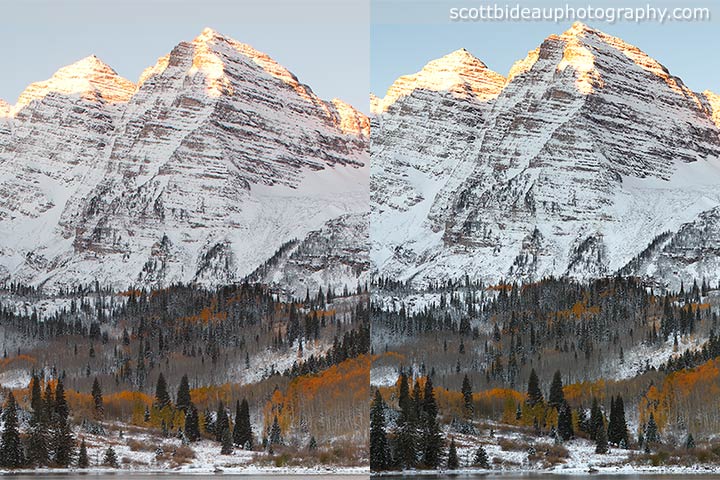
Take a look at this image of the Maroon Bells. Can you guess which was taken with a wide-angle lens and which was taken with a telephoto lens? These two photographs look nearly identical even though I used two different lenses at drastically different focal lengths: 17mm versus 180mm. I simply cropped the wide-angle version to match that of the telephoto version. What makes these two images appear similar is my working distance from the mountain, not the focal length of my lens. I stood in the exact same position at Maroon Lake for each photo. Still don’t believe me? Download the telephoto version and the un-cropped wide angle version for yourself, then crop the wide-angle image like I did and compare the two. Better yet – attempt a similar test using your own equipment.

Now let’s try the opposite effect – capturing a scene with different working distances but with the same lens and angle to the subjects. In these toy train images, the top half was taken with a shorter working distance than the bottom half. Look how much closer the blue train in the foreground appears to the green train in the background when photographed from a longer working distance. If you understand the previous discussion, you’ll realize that it doesn’t matter if the two images were taken with the same lens and then cropped or if one was taken with a wide angle and the other with a telephoto lens.
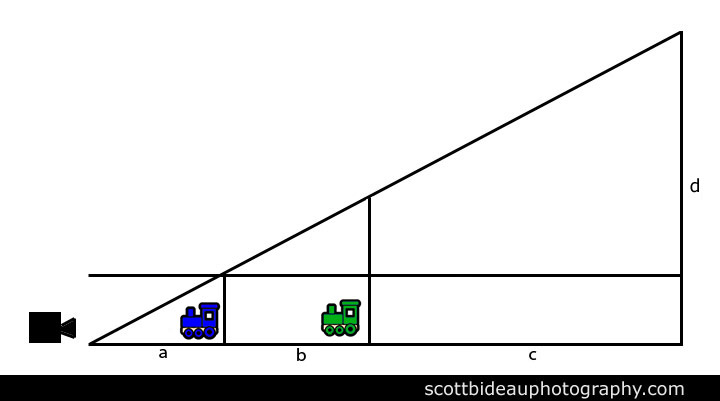
This diagram shows my setup for the close working distance photograph. There was an equal distance between my camera and the blue train, represented by line “a,” and the blue and green train, represented by line “b.” There was about twice that amount of distance between the green train and the background, represented by line “c.”

This second diagram breaks down my setup for the longer working distance photograph. The distance between my camera and the blue train, represented by line “a,” is much greater than the distance between the two trains, represented by line “b.” My camera is also much further away from the trains than they are from the background. The key is that my camera changed positions but the trains did not, even though they appear closer to each other.
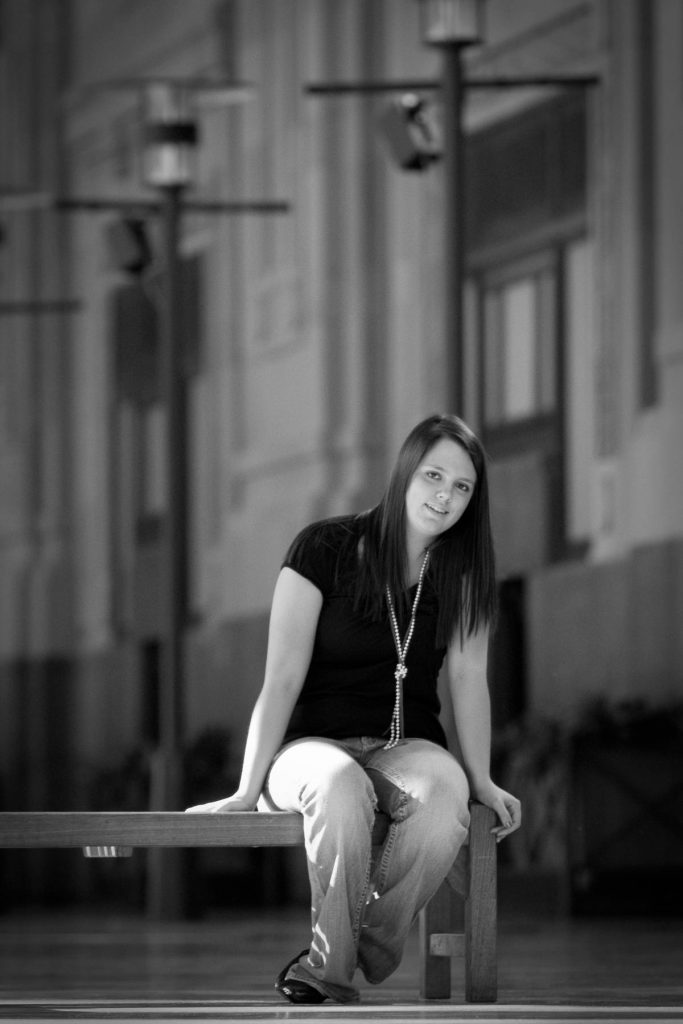
Both of these concepts are very important to portrait photography. In this example, the actual background was fairly busy and quite deep. But by stepping away from the subject, I was able to “compress” that background into something that is still recognizable as Union Station in Kansas City without being too distracting. While I could have technically used a wide-angle lens and cropped in, a telephoto was much faster and didn’t lose any pixels due to cropping.
How I apply this concept to my landscape photography depends on the desired effect.

With this image of the Nelson Art Museum in Kansas City, I got very close to the shuttlecock lawn art because I wanted its size to be distorted in relation to the museum.
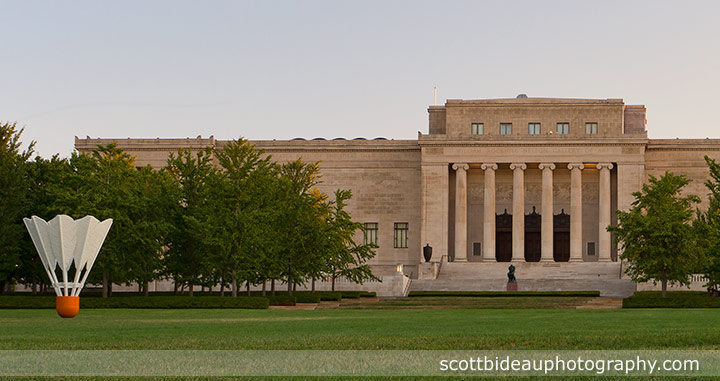
As you can see with this image taken from a longer working distance, the shuttlecocks aren’t nearly as large as the first image would lead you to believe.
One other point I’ll mention is that these concepts apply equally to cameras of all sensor sizes. If you have a 1.6X crop sensor camera and stand next to someone with a 1.0X crop sensor camera, as long as your lens selection or post-processing image cropping allows you to frame the same scene, your perspective compression will be equal even though the full frame camera will be at a longer focal length.
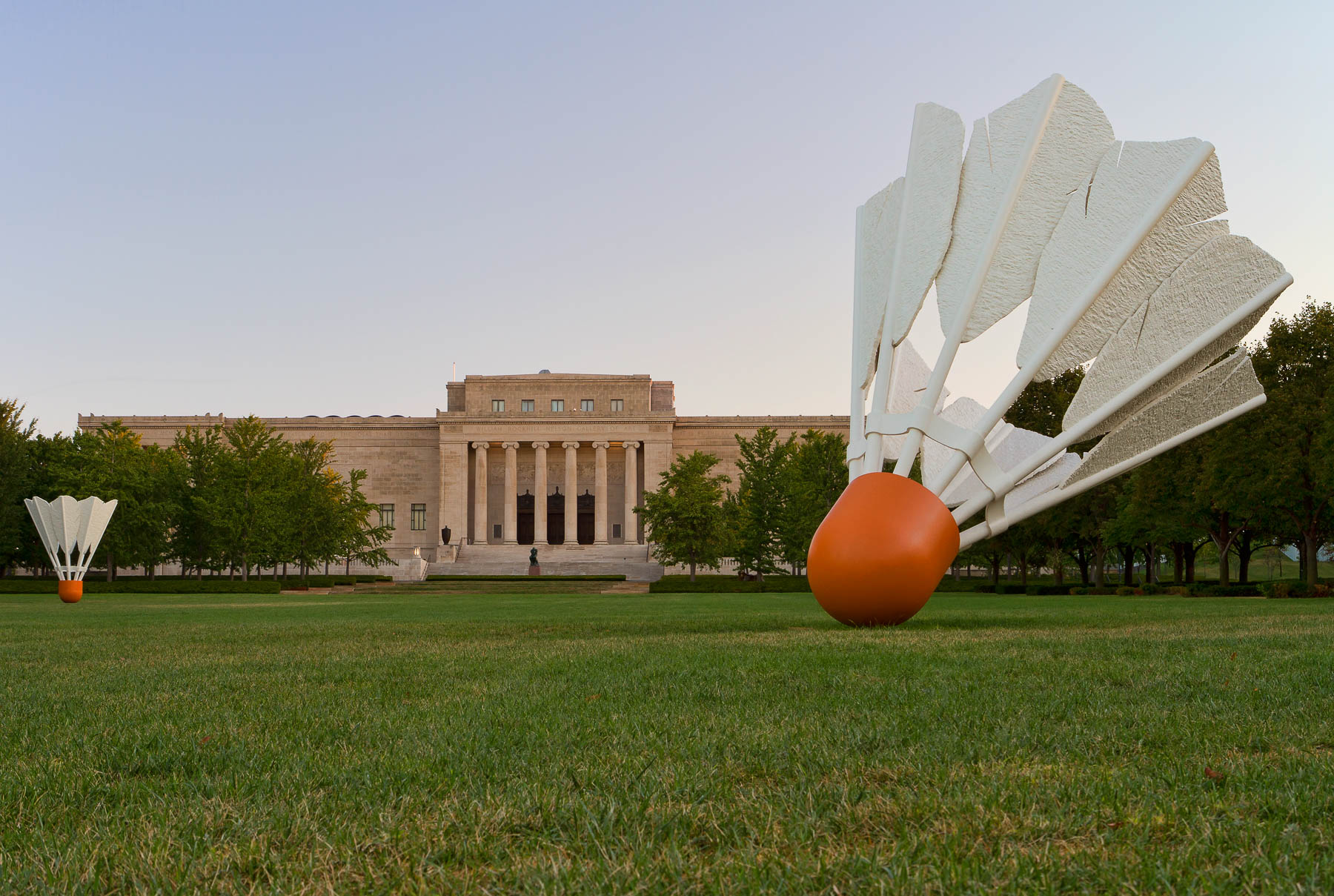
Leave a Reply